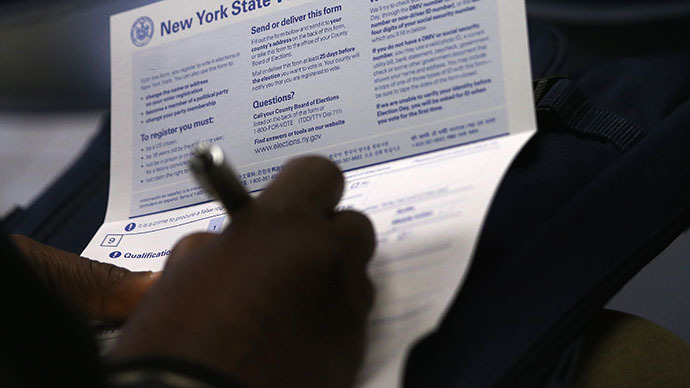Slower than paperwork: DHS watchdog says billion-dollar electronic immigration system screwed

Although it’s electronic and cost almost $2 billion dollars to develop, a new automated system for processing immigration forms takes twice as long as filing applications by hand, according to a Department of Homeland Security internal watchdog.
Perhaps the story of the government’s failed $1.7 billion Electronic Immigration System — or ELIS - best sums up the adage, ‘the more things change, the more they stay the same.’
Hundreds of US cities set to protest 'invasion'
of illegal migrants
Started six years ago under a $536,000 contract, the project called Transformation fizzled over a host of perplexities, not least of all mind-boggling electronic bureaucracy just to enter the system.
"Immigration services officers take longer to adjudicate in ELIS in part because of the estimated 100 to 150 clicks required to move among sublevels and open documents to complete the process," Richard Harsche, acting assistant inspector general for the DHS Office of IT Audits, said in a newly released report.
ELIS — the abbreviation is a nod to the historic immigration
center at Ellis Island — also contains no tabs or highlighting
features, and searches fail to give usable results, he said.
In one test of the system, employees were able to complete 2.16
cases per hour manually as compared with just 0.86 cases using
the problem-plagued ELIS, which is being financed through
immigration application fees.

"Instead of improved efficiency, time studies conducted by
service centers show that adjudicating on paper is at least two
times faster than adjudicating in ELIS," Harsche said.
Officials at DHS US Citizenship and Immigration Services (USCIS),
which operates the system, say they made changes in subsequent
releases of ELIS, including reducing the number of clicks
required to navigate the labyrinthine system.
However, officials fear they are bound by the high number of
contributing software to the project.
"USCIS has been limited in its ability to make changes to
ELIS because of challenges with the existing architecture,"
Harsche said. "The architecture consists of 29 commercial
software products, which are difficult to integrate."
Most changes,like adjusting the interface to make it more
intuitive, will be implemented as part of the program’s
transition to a more flexible architecture. The start of
development in the new architecture began in October 2013,”
the report added.
By the end of 2014, a switchover to ELIS2 version is scheduled.
USCIS recently awarded a 2-year contract which potentially costs $58
million according to nextgov.com website
to four vendors in hopes of finishing the automated system. The
agency intends to introduce the project in six-month software
release cycles to identify problems in the early stages.














